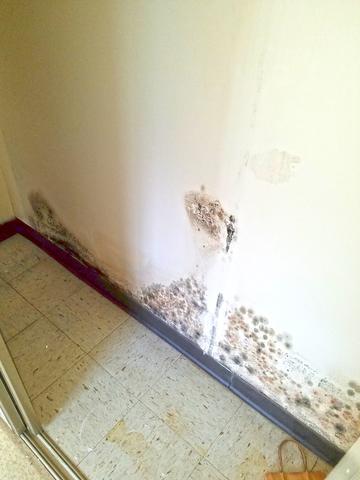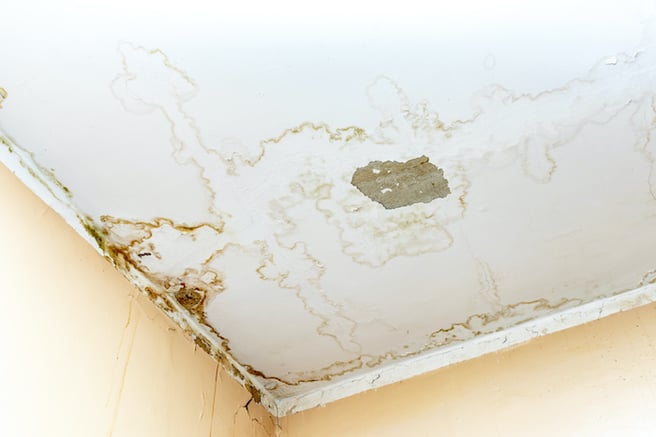How Moisture Leads to Bathroom Water Damage
How Moisture Leads to Bathroom Water Damage
Blog Article
Every person seems to have his or her own rationale on the subject of How to Repair and Prevent Bathroom Water Damage?.

Water damage often happens in the washroom because of the water used day-to-day. Occasionally, the damage could be a little mold from the shower. Other times, it's massive damages on your floor. Whatever it is, it is constantly good to recognize the cause and also avoid it before it happens.
This overview will experience some of the usual reasons for water damage in the washroom. We will additionally analyze what you can do to prevent these reasons from harming your restroom. Let's dive in.
5 Typical Reasons For Water Damage in Bathrooms
These are the common reasons you would have water damage in your washrooms as well as exactly how you can spot them:
Ruptured or Leaking Pipes
There are many pipelines carrying water to different parts of your shower room. Some pipes take water to the bathroom, the sink, the taps, the shower, and numerous other areas. They crisscross the tiny location of the shower room.
From time to time, these pipelines can get corroded and ruptured. Various other times, human action might trigger them to leakage. When this happens, you'll find water in the edges of your bathroom or on the wall.
To identify this, keep an eye out for bubbling walls, mold and mildews, or mold. Call a specialist emergency plumbing technician to repair this when it takes place.
Splits in your wall surface tilesv
Restroom wall surface ceramic tiles have actually been specially created for that purpose. They secure the wall from moisture from individuals taking showers. Nonetheless, they are not unbreakable.
Occasionally, your bathroom wall ceramic tiles split and enable some moisture to leak right into the wall surface. This could potentially destroy the wall if you do not take any kind of activity. If you see a crack on your wall ceramic tiles, fix it promptly. Don't wait until it damages your wall surface.
Overruning bathrooms as well as sinks
As human beings, in some cases we make errors that might create some water damage in the shower room. As an example, leaving your sink faucet on might create overruning and also damages to other parts of the washroom with wetness.
Additionally, a malfunctioning toilet might create overflowing. For instance, a broken toilet manage or other parts of the cistern. When this occurs, it can damage the floor.
As quickly as you see an overflowing sink or bathroom, call a plumbing professional to aid manage it quickly.
Roofing Leaks
Occasionally, the trouble of water damage to the restroom may not come from the shower room. For instance, a roofing leakage might cause damage to the washroom ceiling. You can detect the damages done by checking out the water spots on the ceiling.
If you find water discolorations on your ceiling, examine the roofing to see if it's damaged. After that, call an expert to help fix the issue.
Excess Moisture
It's great to have that lengthy shower as well as splash water while you dance around as well as act like you're executing, but often these acts can trigger water damage to your bathroom.
Sprinkling water around can create water to go to corners and develop mold and mildews. Enjoy just how you spread excess moisture around, and when you do it, clean it up to avoid damage.
Final thought
Water damage to your washroom can be irritating. However, you can handle it if you stop a few of the reasons discussed in this guide. Call a professional emergency plumbing if you notice any kind of serious damage.
How to Repair a Water-Damaged Wall in the Bathroom
All you need to know to repair bathroom wall water damage – from identifying the water source to finishing the repair professionally. If you don’t act quickly to resolve a water damage problem, you could find that it develops into a mold issue and/or cause structural damage to your home. Follow this guide to repair your bathroom before it's too late.
All you need to know to repair bathroom wall water damage
Water damage is a common household problem, and one that, if left unrepaired, can quickly lead to structural problems and health issues. The two most likely rooms where water damage may occur is the bathroom and the kitchen – where water is used often and there is high humidity.
What is water damage?
It is easy to think of water damage as caused by a flood or leaking tap or burst water pipe. However, when water damage is assessed, there are three main categories into which water falls (as classified by the American National Standards Institute). These categories are defined as:
Category 1 Water – ‘Clear Water’
This is sanitary water. There is usually no major threat to health by washing with this water, drinking it, or inhaling if it is streaming. Most water that enters your home will be category 1 water, while most water leaving your home will be either category 2 or 3 water. It may also come from melting snow, rainwater and water tanks.
Damage caused by this type of water can usually be repaired or restored, though this doesn’t mean that there are no potential health issues.
Category 2 Water – ‘Grey Water’
This is contaminated water – sometimes considerably so – and will cause illness if consumed or if it comes into contact with your skin. Water damage in this category is often caused by overflows from toilet bowls, and damage to washing machines and dishwashers. While damaged items might still be repaired or restored after damage by grey water, it is more difficult and more expensive to do so.
If the water damage in your home has been caused by grey water, it is advisable to have repairs made by professionals.
Over time, grey water will deteriorate and become black water.
Category 3 Water – ‘Black Water’
Category 3 water, also known as black water, is highly contaminated and a great risk to health. This may contain raw sewage, heavy metals, and other toxic substances. It will smell terrible.
If this is the water that has caused damage in your bathroom, do not touch it. Stop the water flowing if possible, seal the room and call the experts: it really isn’t worth the risk of ill health and disease that could be fatal. It is very unlikely that items can be repaired or restored if they have been damaged by black water.
https://www.porterscleaning.com/blog/how-to-repair-a-water-damaged-wall-in-the-bathroom/

How to Repair a Water-Damaged Wall in the Bathroom
All you need to know to repair bathroom wall water damage – from identifying the water source to finishing the repair professionally. If you don’t act quickly to resolve a water damage problem, you could find that it develops into a mold issue and/or cause structural damage to your home. Follow this guide to repair your bathroom before it's too late.
All you need to know to repair bathroom wall water damage
Water damage is a common household problem, and one that, if left unrepaired, can quickly lead to structural problems and health issues. The two most likely rooms where water damage may occur is the bathroom and the kitchen – where water is used often and there is high humidity.
What is water damage?
It is easy to think of water damage as caused by a flood or leaking tap or burst water pipe. However, when water damage is assessed, there are three main categories into which water falls (as classified by the American National Standards Institute). These categories are defined as:
Category 1 Water – ‘Clear Water’
This is sanitary water. There is usually no major threat to health by washing with this water, drinking it, or inhaling if it is streaming. Most water that enters your home will be category 1 water, while most water leaving your home will be either category 2 or 3 water. It may also come from melting snow, rainwater and water tanks.
Damage caused by this type of water can usually be repaired or restored, though this doesn’t mean that there are no potential health issues.
Category 2 Water – ‘Grey Water’
This is contaminated water – sometimes considerably so – and will cause illness if consumed or if it comes into contact with your skin. Water damage in this category is often caused by overflows from toilet bowls, and damage to washing machines and dishwashers. While damaged items might still be repaired or restored after damage by grey water, it is more difficult and more expensive to do so.
If the water damage in your home has been caused by grey water, it is advisable to have repairs made by professionals.
Over time, grey water will deteriorate and become black water.
Category 3 Water – ‘Black Water’
Category 3 water, also known as black water, is highly contaminated and a great risk to health. This may contain raw sewage, heavy metals, and other toxic substances. It will smell terrible.
If this is the water that has caused damage in your bathroom, do not touch it. Stop the water flowing if possible, seal the room and call the experts: it really isn’t worth the risk of ill health and disease that could be fatal. It is very unlikely that items can be repaired or restored if they have been damaged by black water.
https://www.porterscleaning.com/blog/how-to-repair-a-water-damaged-wall-in-the-bathroom/
I found that write up on How to Repair and Prevent Bathroom Water Damage? when doing a search on the search engines. Appreciated our blog? Please share it. Help another person find it. Thanks a bunch for your time. Kindly visit our website back soon.
Pro service, one dial away. Report this page